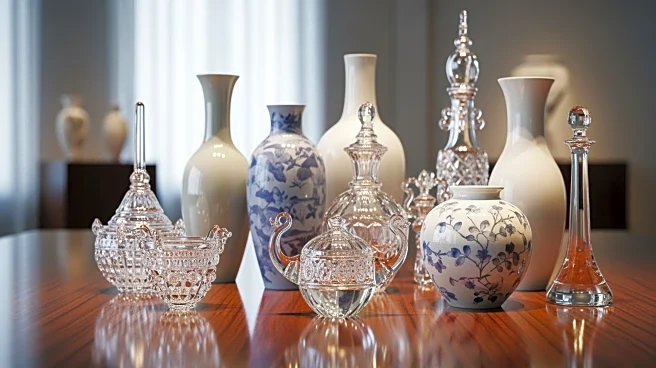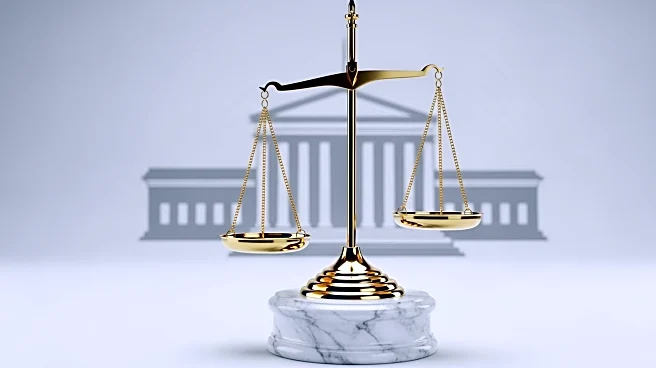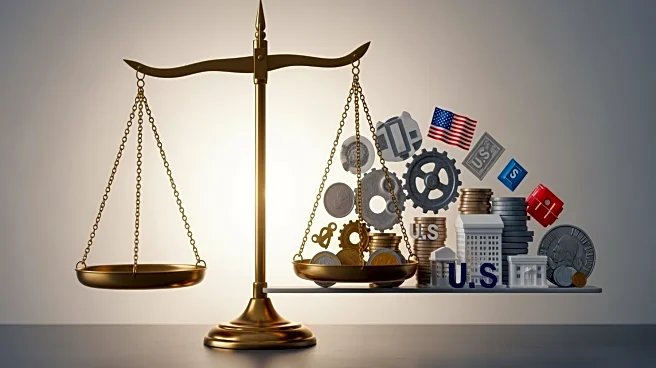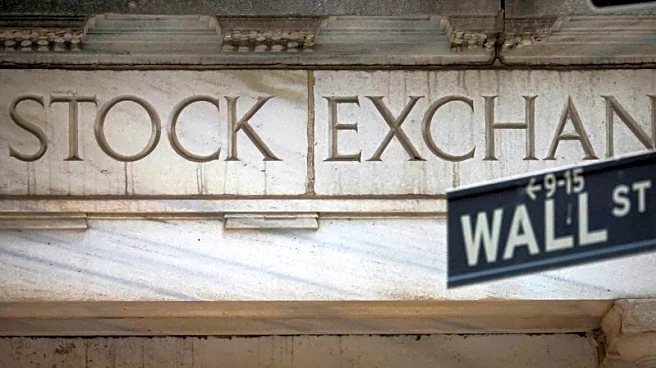What's Happening?
President Trump's administration has imposed new tariffs that are significantly impacting the U.S. trade in antiques and decorative arts. The executive order, signed on September 29, applies a 25% tariff on wood
imports and derivative products such as upholstered furniture and kitchen cabinets, effective from October 14. These tariffs are intended to support domestic producers in industries like construction and manufacturing. However, they have caused considerable disruption in the antiques market, affecting dealers who import items from abroad. The tariffs are set to increase further, with upholstered furniture tariffs rising to 30% and kitchen cabinets to 50% by January 2026. The International Emergency Economic Powers Act, under which these tariffs are levied, exempts fine art but not decorative arts, leading to increased costs for dealers importing items like furniture and porcelain.
Why It's Important?
The tariffs have significant implications for the U.S. decorative arts market, potentially reducing the competitiveness of American dealers compared to their European counterparts. Dealers are facing increased costs, which may lead to higher prices for consumers or reduced profit margins for businesses. The tariffs could also discourage international trade in antiques, pushing sales out of the U.S. and affecting the availability of unique items in the domestic market. The legal challenge to these tariffs, set to be heard by the U.S. Supreme Court, could determine the future of such trade policies and their impact on the art and antiques industry.
What's Next?
The U.S. Supreme Court is scheduled to hear arguments on November 5 regarding the legality of the tariffs imposed by President Trump. The outcome of this case could have far-reaching effects on the administration's ability to impose tariffs unilaterally. If the court rules against the tariffs, it could lead to their removal, potentially revitalizing the U.S. antiques market. However, if upheld, dealers may need to adapt to a new market reality, possibly focusing more on domestic sourcing or finding ways to mitigate the increased costs.
Beyond the Headlines
The tariffs highlight broader issues of trade policy and its impact on cultural exchange. By making it more difficult to import decorative arts, the tariffs could limit cultural understanding and appreciation of international art forms. This situation underscores the tension between economic protectionism and the free flow of cultural goods, raising questions about the role of government in regulating art and antiques trade.












